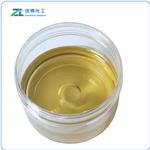The essential oil, sometimes called muscatel, is obtained by steam or water distillation of flowering tops and leaves
with yields ranging between 0.7 to 1.5%. It is produced in large quantities in France, Russia and Morocco. The Italian production is
fairly small.
Clary sage oil is obtained by steam distillation of flowering tops and foliage of
Salvia sclarea L. (Lamiaceae). It is a pale yellow to yellow liquid with a fresh
herbaceous odor and a wine-like bouquet.
d2020 0.890–0.908; n20D 1.4560-1.4660; α20D ?10 ° to ?26 °; ester value:
180–235 corresponding to an ester content of 63–82% calculated as linalyl
acetate; solubility: 1 vol in max. 3 vol 80% ethanol; content by GC: 56–78%
linalyl acetate and 6.5–24% linalool.
In addition to linalyl acetate, the oil contains linalool and other terpene
alcohols, as well as their acetates. When the volatile components are evaporated,
a distinct ambergris note develops, which is attributed to oxidative
degradation products of sclareol.
Clary sage is mainly grown in Eastern Europe (Ukraine,Moldova), France,
the United States, and China. By far, the main part of the crop is used to prepare
clary sage extract (concrete) by solvent extraction.Theconcrete is almost
exclusively used to isolate its main constituent, the diterpene sclareol.
The essential oil of French production is a yellow liquid. The physical–chemical characteristics
vary, depending on the source; minor components also vary. The oil is soluble in most fixed oils, and in mineral oil up to three volumes,
but becomes opalescent on further dilution. It is insoluble in glycerin and in propylene glycol.
Found in the leaves and flowering tops of Salvia sclarea L. (Fam. Labiatae) (Gildemeister & Hoffman, 1961 ; Naves, 1974).
clary sage oil (Salvia sclarea) could be beneficial in products designed for use around the eyes because of its soothing and antiinflammatory properties. It is used to refresh the skin and can also mask odors. In addition, its fragrance may have aroma therapeutic value, such as promoting cell regeneration for normal, dry, and sensitive skin types.
Extractives and their physically modified derivatives. Salvia sclarea, Labiatae.
By steam distillation of the flowering tops and leaves of Salvia sclarea L. (Naves, 1974).
Essential oil composition
The main constituents of clary sage oil are linalyl acetate and linalool
Low toxicity by ingestion. A skinirritant. When heated to decomposition it emits acridsmoke and irritating vapors.


